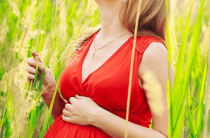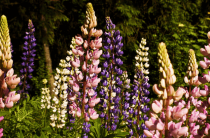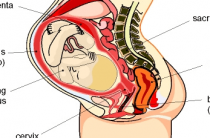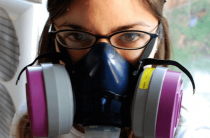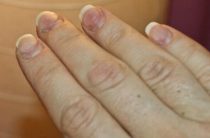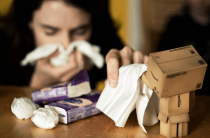Allergy to flowering is provoked by the pollen of various plants, which contains allergens. Unfortunately, it is not possible to avoid an allergy to the flowering of some plants by avoiding contact with the allergen. For this reason, it is recommended to familiarize yourself with the features of the treatment and prevention of this disease.
This kind of allergy is characterized by a strict dependence of the development of symptoms on the time of flowering of the plant - the allergen. Usually the duration of the course of the disease is 3-5 weeks, provided that the patient is allergic to the flowering of one plant. Signs of the disease are more aggravated in dry and windy weather, as this contributes to a greater spread of plant pollen in the air.
Prevention of allergy to flowering
- During the period of the appearance of allergen pollen, refrain from walking during the day, in sunny weather and during wind;
- Install special barrier nets on windows;
- Carry out wet cleaning of the room with great frequency;
- Eat right, lead a healthy lifestyle with moderate physical activity;
- Take vitamins and minerals.
To date, cure for allergies has been found. There are only various drugs that are used to relieve the symptoms that arise. The problem is that modern science has been unable to determine the exact cause of allergies. Only the mechanism of development of cellular reactions is known, and it is well studied. But why the body of some people reacts to safe substances in this way is unknown.
The only remedy that allows you to get rid of an allergy to flowering, cure its other types for a long time, is immunotherapy. The essence of this therapeutic method is the prolonged introduction of minimal dosages of the allergen in order to increase tolerance to it from the immune system. It is also advisable to carry out immunotherapy in mid-autumn to early spring.
The main drugs used to relieve allergic symptoms are antihistamines, glucocorticoids, vitamins and minerals. These funds are used to eliminate allergic symptoms, which allows you to eliminate the discomfort that this disease causes to the patient.
If you are concerned about an allergy to flowering, seek the help of a doctor!
He will select an individual therapy that will help alleviate general well-being and eliminate its unpleasant symptoms.
Antihistamines
Drugs that eliminate the signs of an allergy to flowering act on different parts of the chain of allergic reactions. So, antihistamines prevent the connection of histamine with H1 receptors. Histamine is the hormone responsible for the manifestation of allergic reactions in the body. The mechanism of its action is based on contact with type 1 receptors, which are located on the cells of the mucous membrane, blood vessels, epidermis, bronchi, etc.
Antihistamines are substances that have a higher ability to bind to these receptors, due to which histamine is displaced from the chain of allergic reactions. At the same time, they do not have the biological effects of histamine and their combination with receptors does not cause any changes in the body.
First generation antihistamines
These antihistamines are pioneers in the treatment of bloom allergy. This group of antihistamines is characterized by the absence of prolonged contact with receptors, as a result of which the drugs have to be used in high dosages and often, which only enhances undesirable side effects.
First generation antihistamines have the ability to penetrate the brain, where they also bind to type 1 histamine receptors. Being in the brain, these receptors have a stimulating effect, due to which the natural rhythms of sleep and wakefulness in humans are regulated. Neutralization of the stimulating effect of histamine on the central nervous system leads to lethargy, lethargy and drowsiness.
Also, first-generation antihistamines, characterized by low selectivity for receptors, bind to muscarinic receptors, which provokes an increase in heart rate, drying out in the mouth and constipation.
At the moment, they try to avoid the use of first-generation drugs. They are being replaced by more modern drugs with less pronounced side effects.
Second generation antihistamines
This generation of drugs is characterized by a lower ability to penetrate the active substance into the brain, due to which the inhibitory effect is much less pronounced. Only in rare cases, it requires special correction. However, drugs in this group can negatively affect the functioning of the heart, resulting in increased heart rate and increased pressure.
They have a high affinity for histamine H1 receptors, due to which they do not cause side effects mediated by contacts with other receptors.
Third generation antihistamines
To date, these are the most modern drugs used in antihistamine therapy for the treatment of various types of allergies, including allergy to flowering. They are characterized by the lowest risk of side effects. Connecting exclusively to type 1 histamine receptors, they develop interaction over a long period. Due to this, it became possible to use these drugs once a day in small dosages.
This is the safest category of antihistamines.
Ebastin is a third-generation antihistamine.
The therapeutic effect develops within 10 hours and lasts about 48 hours. Ebastine has a strong action against asthmatic manifestations of allergy, due to which it is used in the treatment of allergies to pollen, dust, and asthma. However, there are a number of restrictions on this drug, it is not recommended for use in children, the elderly, as well as people with liver disease. Loratidine allows you to take it once a day. Loratidine does not have a sedative effect; after taking it, there is no drying of the oral cavity.
Fexofenadine has a powerful effect in relieving the symptoms of an allergy to flowering, which occurs within an hour and persists for the next 24 hours. Fexofenadine is effective against all allergy symptoms, but it shows the greatest effectiveness in relieving respiratory symptoms (sneezing, allergic cough, swelling of the mucous membranes of the eyes and nose).
Loratadine is also a third generation drug. Today, as a drug to eliminate allergic symptoms, loratidine is perhaps the most common. Its therapeutic effect on allergy symptoms unfolds within half an hour. The duration of therapeutic effects is observed during the day.
Cetirizine is an extremely powerful drug. Due to this, it is used to relieve acute manifestations of allergies, as part of complex therapy. It has proven itself as an effective remedy for combating dermatological manifestations of an allergy to flowering. Persons suffering from impaired renal function are advised to take cetrizine with caution. Not recommended for pregnant and lactating women.
Diphenhydramine is a first-generation histamine receptor blocker. It has a short duration of action and a high incidence of side effects. Causes strong inhibition of the central nervous system.
Diazolin is also a first generation drug. Unlike diphenhydramine, it almost does not cause drowsiness and lethargy.
Diphenhydramine is a histamine H1 receptor blocker, which is used in the form of an ointment for external use. Such local blocking leads to the removal of allergy symptoms: it eliminates redness and flaking of the skin, reduces swelling and eliminates inflammation. It is used for urticaria and various dermatitis to relieve skin symptoms. However, it should be used as prescribed by a specialist, since unwise use can lead to various skin problems at the sites of application.
Corticosteroids for allergies
Corticosteroids are drugs that are synthetic analogues of cortisol. In our body, cortisol relieves inflammatory reactions, as well as its use allows you to get rid of skin manifestations of allergies, runny nose, swelling of the sinuses, tearing. Corticosteroid preparations are used both in the form of injections and in the form of ointments, creams and gels for local application.
Dexamethasone is a synthetic agent that is an analogue of cortisol, but has a more active effect in relieving allergy symptoms to flowering and various other components, reducing inflammation. Its use allows you to eliminate dermatological manifestations, laryngeal edema, bronchospasm, respiratory symptoms of allergies.
Dexamethasone is used in short courses, due to the increased risk of side effects, with long-term use, the main ones are: peptic ulcer of the gastrointestinal tract, immune suppression, deterioration of the adrenal glands, decreased muscle mass and muscle weakness, injuries of the musculoskeletal system.
Flucinar is a topical corticosteroid. The use of flucinar allows you to eliminate local dermatological symptoms of allergies: urticaria, itching, burning, skin peeling, dermatitis, etc.
Long-term use of flucinar contributes to the weakening of local immunity, the appearance of acne, hair loss, the development of infectious and fungal diseases.
Betamethasone is a corticosteroid drug designed to relieve skin manifestations of allergies. It has a fairly strong effect, which is short-lived. It is used to relieve such symptoms: dermatitis, itching and burning of the skin, eczema, seborrheic and psoriatic diseases.
The information provided in this article is for informational purposes only. Only a qualified specialist has the right to diagnose and treat allergies, including flowering.

